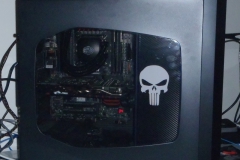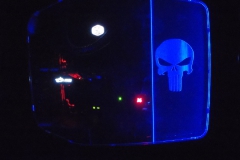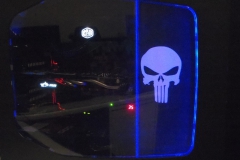Test Setup
The test setup we used is listed below and was a very different experience from our usual Z87 ASUS Maximus VI Gene testbench. With X99 and the extra CPU power, you can really notice the difference and we saw an immediate improvement in gaming and video rendering where the extra cores were used.
| CPU | i7-5930K |
| CPU Cooler | Noctua NH-D15, Fractal Design Kelvin S24 |
| Memory | 16GB Kingston Predator DDR4 3000MHz (4x4GB) |
| Case | Lian Li Pitstop T60 |
| Hard Drive | Kingston M.2 2280 120GB SSD, Seagate 1TB 7200rpm HDD |
| Power Supply | Corsair HX850 |
| Graphics Cards | MSI GTX 980 Gaming 4G |
| Audio | Logitech G430 & Sony stereo ear bud headphones |
| Network | Direct connection to the cable modem & Shared Gigabit connection via Netgear WNDR3700 router |
| Optical | Samsung SATA2 BluRay drive |
| OS | Windows 8.1 |
Overclocking
Although we managed to hit 4.3GHz as our highest and most stable OC with this board, it wasn’t the best balance of thermals for performance. Using a 125MHz base clock with the Memory running at 3000MHz under an XMP profile saw us achieve 4.25GHz with a 34 multi and 1.3V via UEFI. Overclocking manually through the MSI Control Centre Software was easy but we went UEFI in the end out of personal preference.
For those who want to enjoy the benefits of an overclock but don’t want to invest too much time, MSI have the OC Genie button on the motherboard but you can also use the UEFI and Windows based Control Centre Software to let the motherboard do the work for you. The motherboard has a switch so that you can choose 1 of the 2 BIOS chips.
When using the OC Genie, we saw 3.9GHz with just the press of a button.
UEFI Configuration
MSI’s BIOS is very easy to navigate in order to do simple things like set a boot order or more advanced overclocking tasks. Everything is easy to find and we didn’t experience any issues with any of our keyboards or mice and over the journey, we tried a 4 different keyboards and 5 different mice.
Practical Build
We had a lot of fun building the “Beast Rig” for the March 2015 RESPAWN LAN event.
The MSI X99S Gaming 7 went into our Cosmos SE without issue and the cabling was a dream thanks to the cable header placement on the board and cable routing design of the case. It’s clear that MSI designers thought out how consumers were going to use this product – which is something that is occasionally taken for granted by even the prominent manufacturers.
All up, the practical build came together quickly but neatly. The board looked impressive but at the same time, it’s subtle lighting and branding didn’t steal the show.







